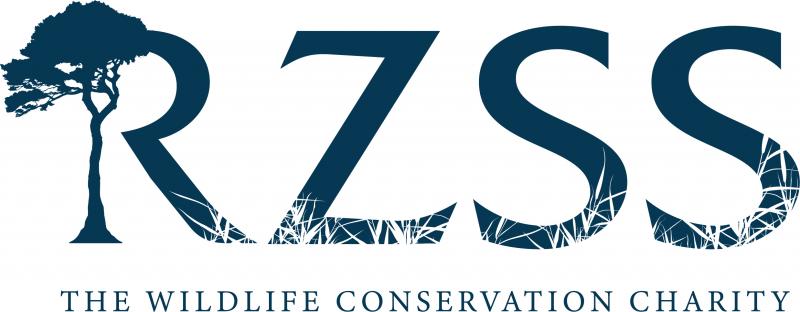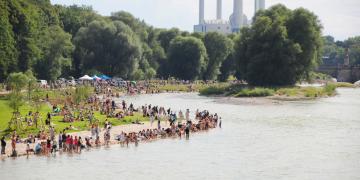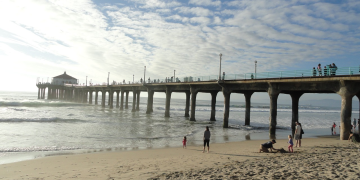
Beavers in Knapdale: Scottish Beavers Reinforcement Project

The Eurasian beaver (Castor fiber) has been extinct in mainland Britain since the 16th century. The Scottish Beaver Trial was the first licensed mammal reintroduction project in the UK, establishing a beaver population of Norwegian origin in Scotland’s Knapdale forest. However, the population was small, with low genetic diversity threatening it with extirpation. The Scottish Beavers reinforcement project was designed to mitigate this risk. Following extensive public consultation and genetic sampling, the project released 21 beavers of Bavarian origin with more, different genetic diversity to Knapdale between 2017 and 2020. The reinforcement was a success, with subsequent monitoring finding increased breeding and new lochs occupied. Additionally, genetic sampling has indicated significantly higher genetic diversity in the population compared to before the translocation, improving the population’s resilience. The project has acted as a template for other translocations and informed Scotland’s Beaver Strategy 2022-2045.
Context
Challenges addressed
Environmental challenges
- The low genetic diversity of a founder population of 16 beavers all descended from the same population in Norway, with potential negative impacts for resilience.
- Minimizing potential welfare impacts of territorial disputes between resident and new animals.
- Minimizing welfare impacts linked to the translocation process and establishment at the release site.
- Risk of introducing the North American beaver rather than the Eurasian species, and any unauthorised releases.
- Potential inbreeding due to a father daughter pairing in one of the original founding families.
- Risk of pathogen and disease spread (Girling et al. 2019).
- Trapping individuals/family groups for translocations.
Social challenges
- Polarisation between stakeholder groups.
- People tampering with traps in Tayside (solved with clear signage/labelling).
- Ensuring the correct licenses were obtained.
- Knapdale selected as low conflict, most people positive but some fishermen against the reinforcement.
Location
Process
Summary of the process
1. Once the problem was identified the source population for reinforcements could then be identified.
2. Once the source population was selected the procedures for trapping, moving and disease screening them could be established ahead of the translocation.
3. Following translocation, the beavers were monitored to understand how successful the project had been.
4. This building block fed back into whether we needed to reiterate or adapt the other building blocks.
Building Blocks
1. Identification of the low genetic diversity and small population size of beavers in Knapdale.
The purpose of this block was to understand the likelihood of the population’s extirpation and the scale of the reinforcement needed. A survey was conducted in 2016 to establish the size of the Knapdale beaver population and each individual’s location. RZSS WildGenes measured the genetic diversity of the Knapdale population using a high density genetic marker panel.
Enabling factors
The expertise of the RZSS WildGenes team and the resources and expertise needed to collect data.
Lesson learned
Conservation translocations need genetic data prior to carrying out translocations where possible to avoid the problems addressed by this solution.
2. Identify the sources of additional beavers to be used to reinforce the population.
The purpose of this block was to ensure that the beavers selected for the reinforcement were appropriate to translocate to a new location and were of the correct origin (Bavarian) to ensure new genetic material was introduced through the reinforcement.
Enabling factors
The cooperation of and good relationships with landowners in Tayside and private holders of beavers. RZSS WildGenes team to establish the origin of the beavers as Bavarian.
Lesson learned
Some landowners remained negatively disposed towards beavers even following beaver removal for translocation and some translocation capture sites in conflict zones were recolonised by beavers. Thus removal via translocation is not always an effective solution for beaver human wildlife conflict and more investment into mitigation to allow landowners to live alongside beavers is required.
3. Translocation of additional beavers into Knapdale to reinforce populations
The purpose of this block was to ensure each beaver was released according to best practice, maximising welfare and survival chances. Beavers to be released were given individual identification numbers, received a full health screening by the RZSS vet team and had blood samples taken to genetically confirm they were Eurasian (Castor fiber) and not North American (C. canadensis). The beavers were released into lochs known to be vacant either alone, in pairs, or in family groups. After each release, the location was checked 24 hours later and then a field sign survey conducted six weeks post-release. Each release loch was also monitored for six weeks between release and field sign monitoring with camera traps.
Enabling factors
The partnership of RZSS which, as a zoo-based conservation organisation, was able to contribute the cumulative skills and expertise of vets, keepers, geneticists and reintroduction scientists. SWT engaged with the government regarding licensing.
Lesson learned
Translocations are dynamic situations to which adaptability and flexibility are key. Animals can arrive unexpectedly, requiring people on standby throughout and using a lot of resources.
4. Post-release monitoring and genetic monitoring
The purpose of this block was to assess how successful the reinforcement was. Field sign surveys of all water bodies and waterways in Knapdale were conducted every six months alongside camera trapping. Additionally, there was an intensive capture and sampling effort in 2019 to help establish breeding success and, in 2020, a survey to investigate any potential expansion by the beavers outside of Knapdale. The RZSS WildGenes team measured genetic diversity in the Knapdale population post-release, comparing it to the pre-release genetic diversity.
Enabling factors
The expertise of RZSS, the cooperation of Forestry and Land Scotland and the assistance of the Heart of Argyll Wildlife Organisation.
Lesson learned
It would have been beneficial to use drones to obtain footage of the release site before and after the translocation. This would have been an excellent way to monitor the transformation of the environment by the beavers.
Impacts
The reinforcement project grew the population to an estimated 25 individuals in 2020, with six new family groups established, improving population’s viability and resilience.
Three of the four project aims were achieved. Firstly, beavers were released into the majority of suitable points within Knapdale. Secondly, an additional two pairs established and bred as a direct result of the reinforcement in 2020. Thirdly, the overall population equated to a minimum of five breeding pairs or family groups. The fourth aim, for there to be a Norwegian-cross-Bavarian pairing will require long-term genetic monitoring to establish success. If established, these pairings will offer a unique genetic reservoir found nowhere else in the UK (or possibly anywhere in Europe), which may be valuable for future UK translocations.
Additionally, by sourcing most of the beavers for the reinforcement from the Tayside area, the project helped to resolve ongoing human-wildlife conflict there between landowners and beavers from unauthorised releases.
We expect the reinforcement will, through increased dam-building, grow the beaver population’s effect on hydrology in Knapdale, improving flood management in the area. We also anticipate positive impacts for local biodiversity, as beavers can increase plant species richness (Willby et al. 2018) and provide habitat for many Scottish taxa (Stringer and Gaywood, 2016).
Beneficiaries
Primary: beaver population – increased size and genetic diversity, improved long-term viability, template for future translocations in UK (benefits other beavers).
Secondary: local ecosystems, local community (increased tourism), scientific community.
Sustainable Development Goals
Story
Helen Taylor, Conservation Programme Manager, RZSS: I joined the Scottish beaver project for the last two years of the reinforcement. Prior to this project I had mainly worked with birds, and mainly overseas. Returning to Britain for the first time in a decade, it was amazing to have the chance to be part of such an exciting and progressive translocation project. Learning about beavers and their roles as ecosystem engineers, seeing the positive impacts they can have on a landscape in real time, and appreciating the complexities around human wildlife conflict for a species that’s being reintroduced after 400 years was an incredible opportunity as a conservation professional. Even better is the fact that, due to the success of the reintroduction, I can carry on visiting the reintroduction site and witness how it’s continuing to change as the result of beavers being back.










